Four
BUSINESS AND SERVICES
The economic development of Austin has come a long way since the time when goods were brought by wagon. The city is now one of the leading high-tech cities in America.
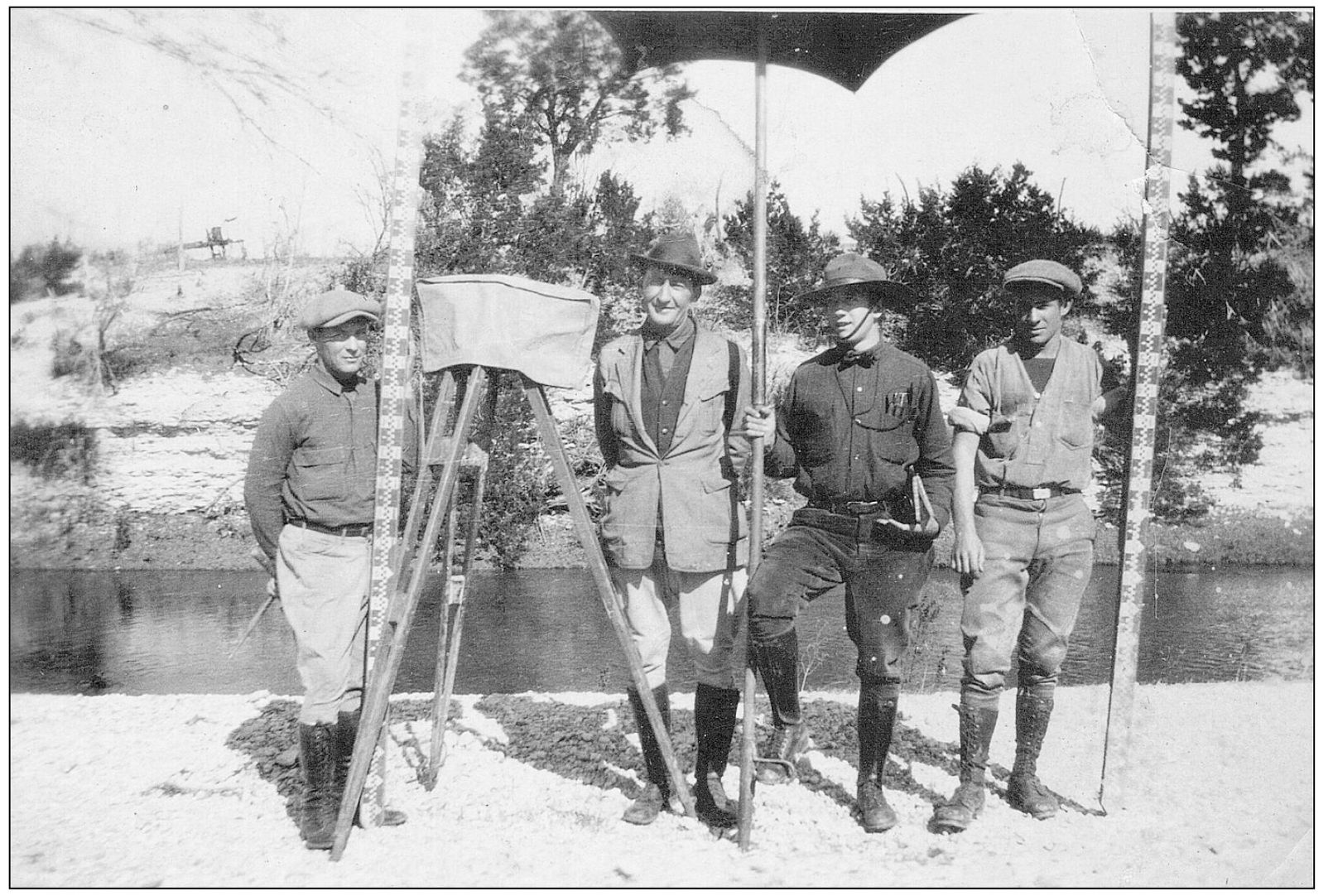
By 1900, the population of Austin had grown to 22,258, almost double what it was just ten years earlier in 1890. This survey crew is kept busy with such a growing city.
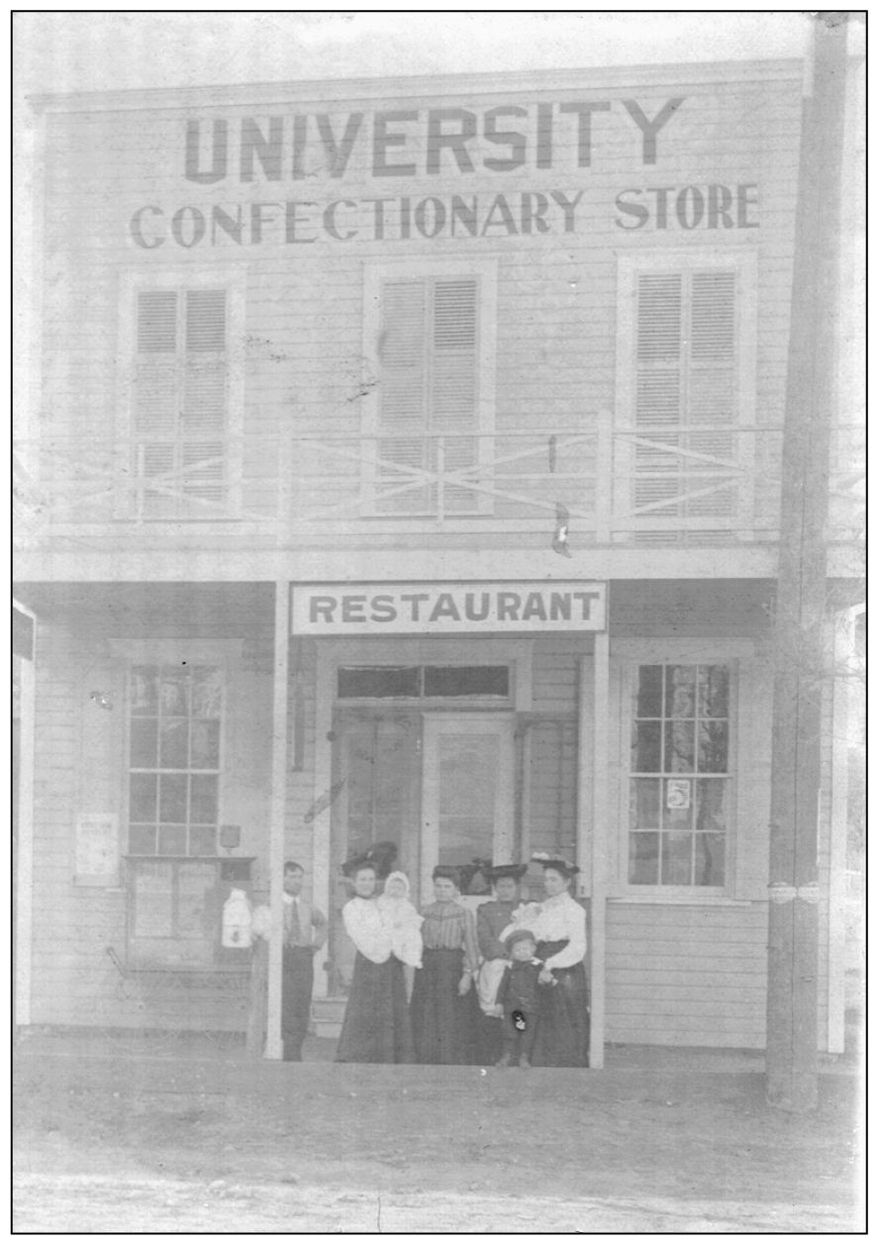
The University of Texas had an astounding enrollment of 986 students in 1900. Capitalizing on such a large population, Charles Wukasch opened his University Confectionery Store in 1902 at 24th and Guadalupe Streets. Charles had served as a private in the 1898 Spanish- American War and stayed in Austin following the war to search for work. His first job was at the Lundberg Bakery on Congress Avenue where he learned the skills to operate his own business. (Courtesy Ken Wukasch.)
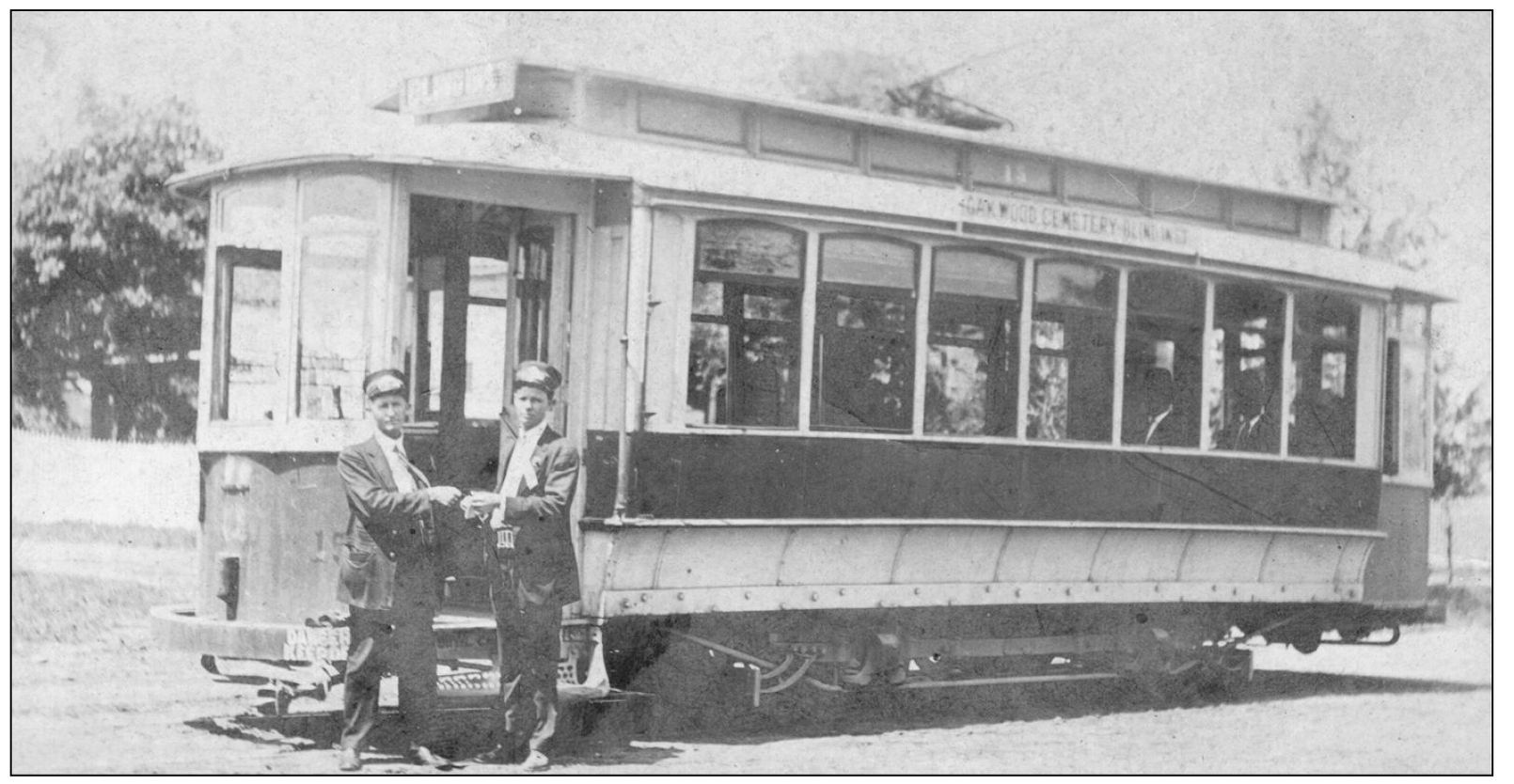
Traffic has always been a concern in Austin. This 1919 photograph of the trolley shows drivers Dan Tucker, left, and John F. Thompson, right. The route is the “Oakwood Cemetery-Blind Institute.”
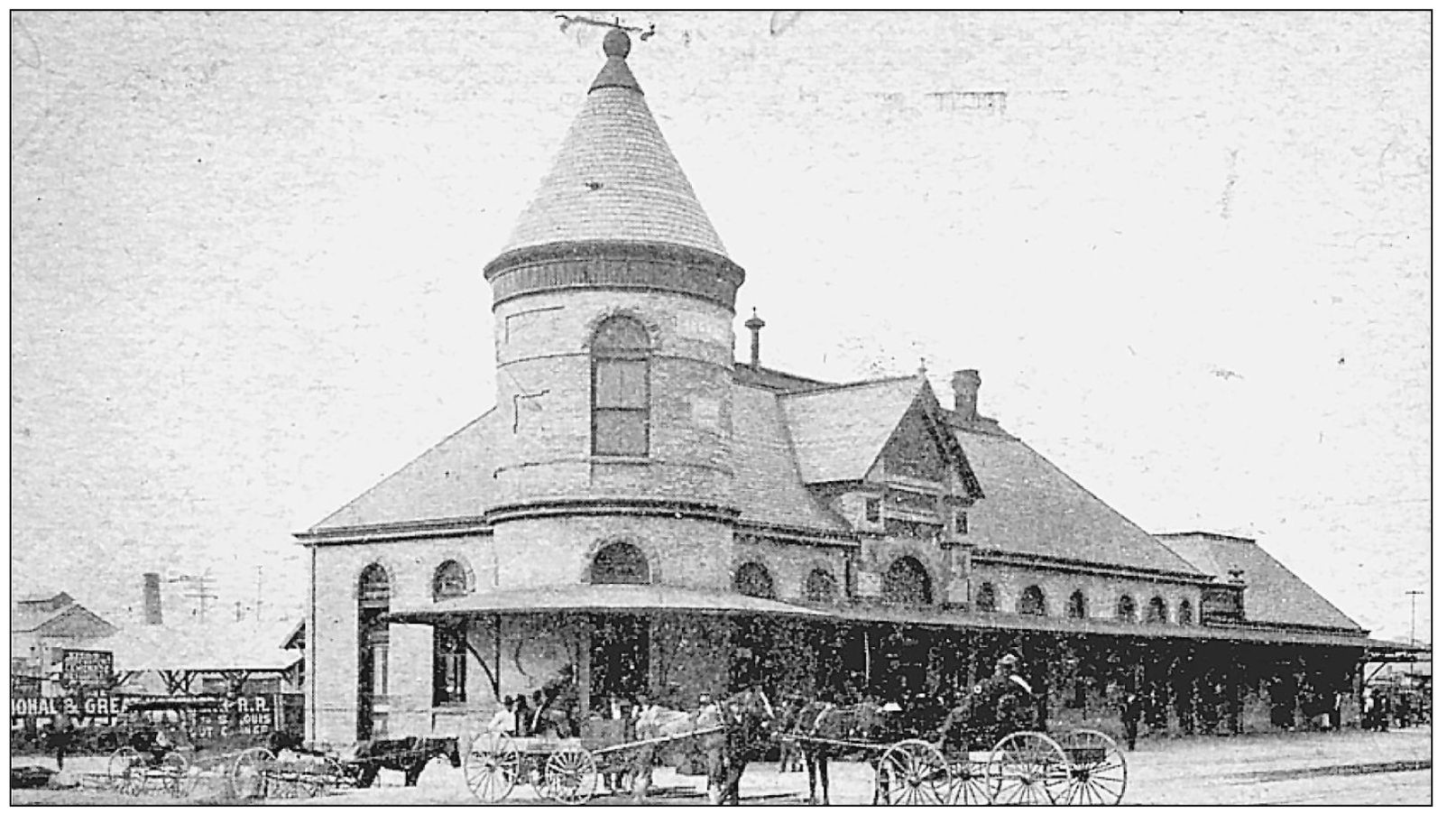
This railroad depot of the International and Great Northern was considered by many folks to be the most beautiful. The first train puffed into Austin on December 26, 1871 and bragged about “record runs” from Houston to Austin in “only” 17 and one-half hours. In 1875, 30,000 cedar trees were rafted down the Colorado River from the hills around Austin and shipped out via the railroad. By 1877, a “refrigerating beer car” was brought in also via the railroad. (Courtesy Mary Hodge.)
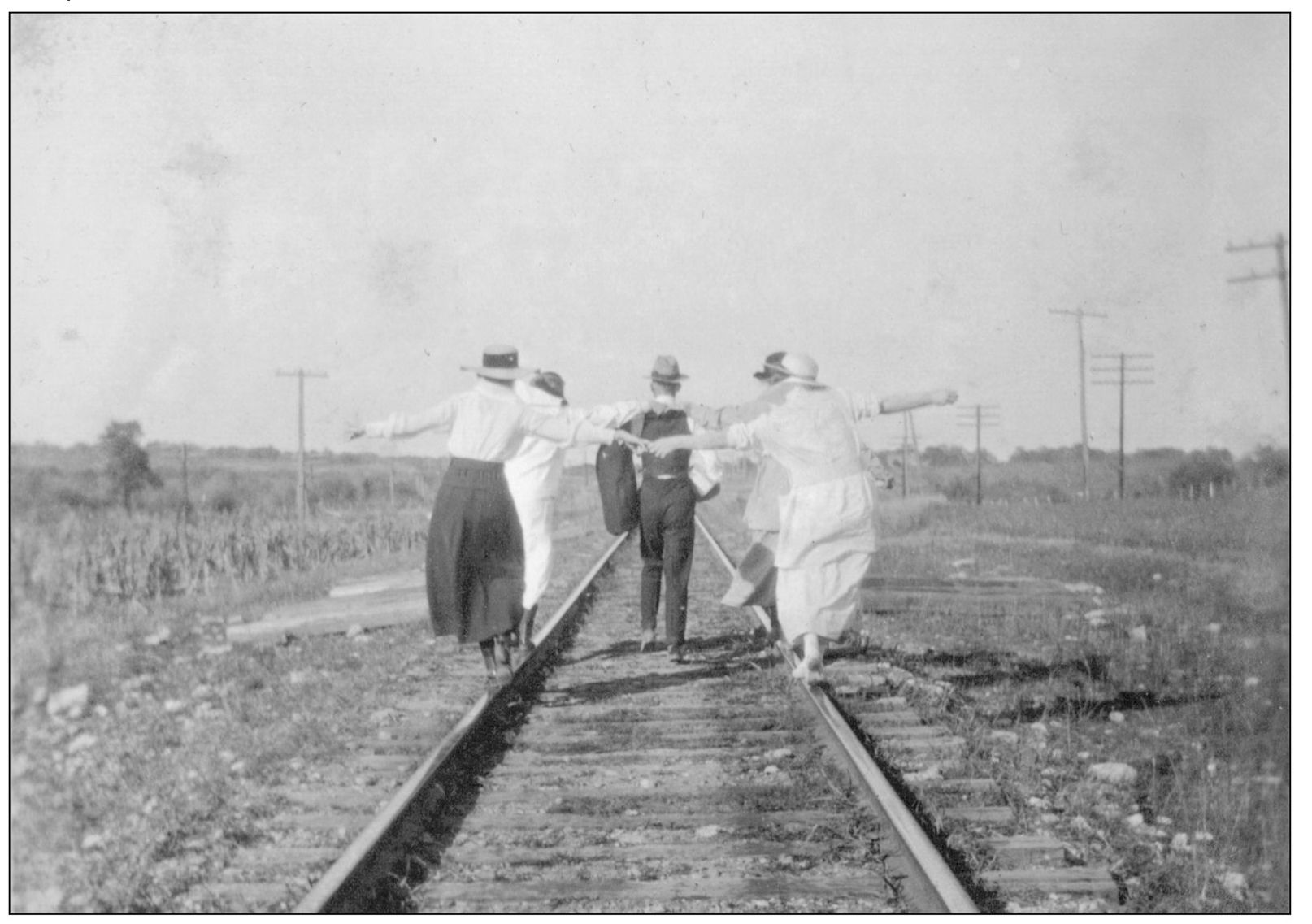
Use of the railroad tracks was not limited to the train. It often was used for walking excursions around town as in this 1915 photograph. (Courtesy Cynthia Trenckmann.)
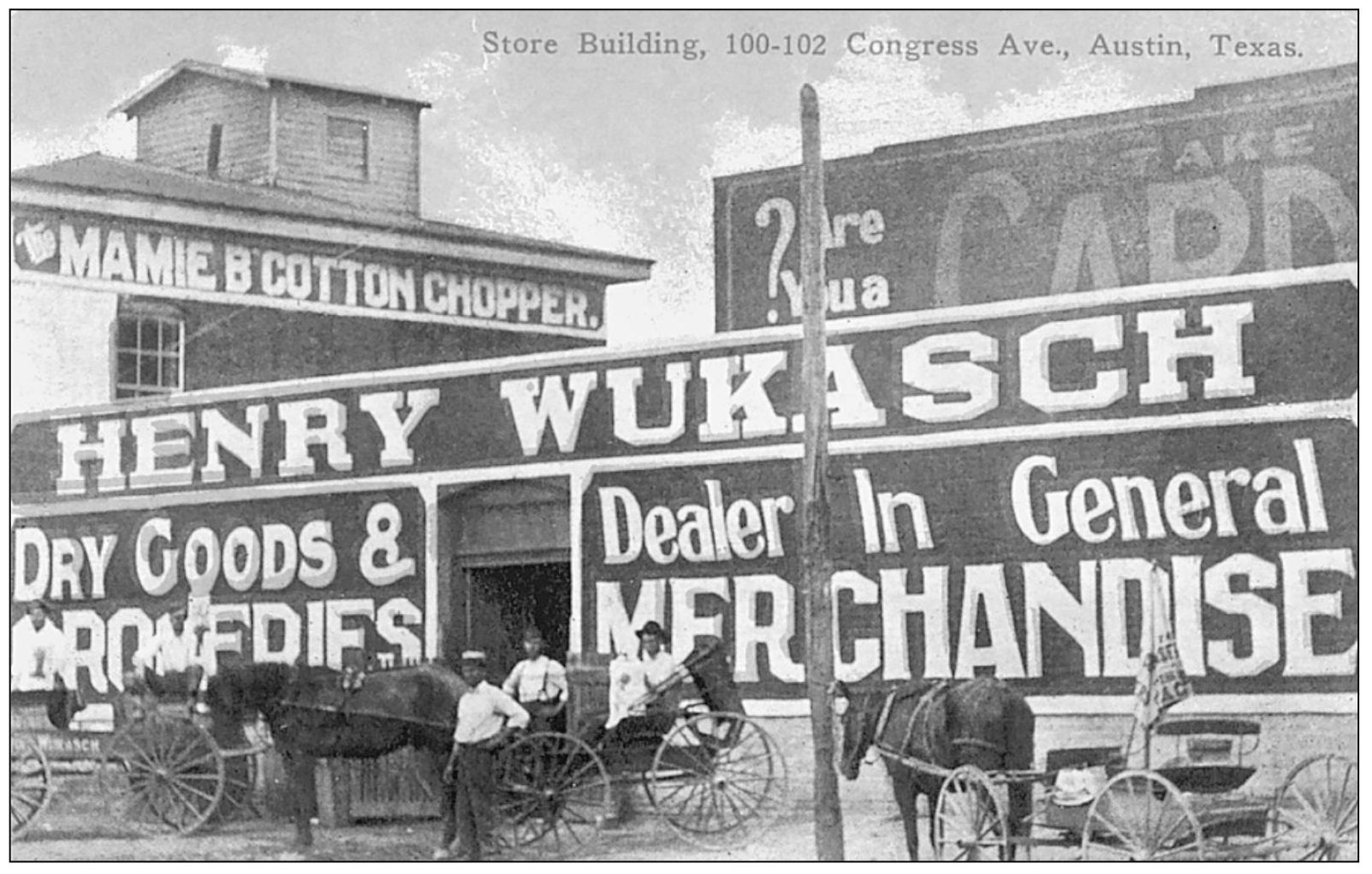
In 1904, Henry Wukasch opened this Dry Good and General Merchandise Store at 100 Congress Avenue. Henry believed in advertising, and it certainly paid off. By the time this photograph was taken in 1912, his business had certainly grown. (Courtesy Ken Wukasch.)
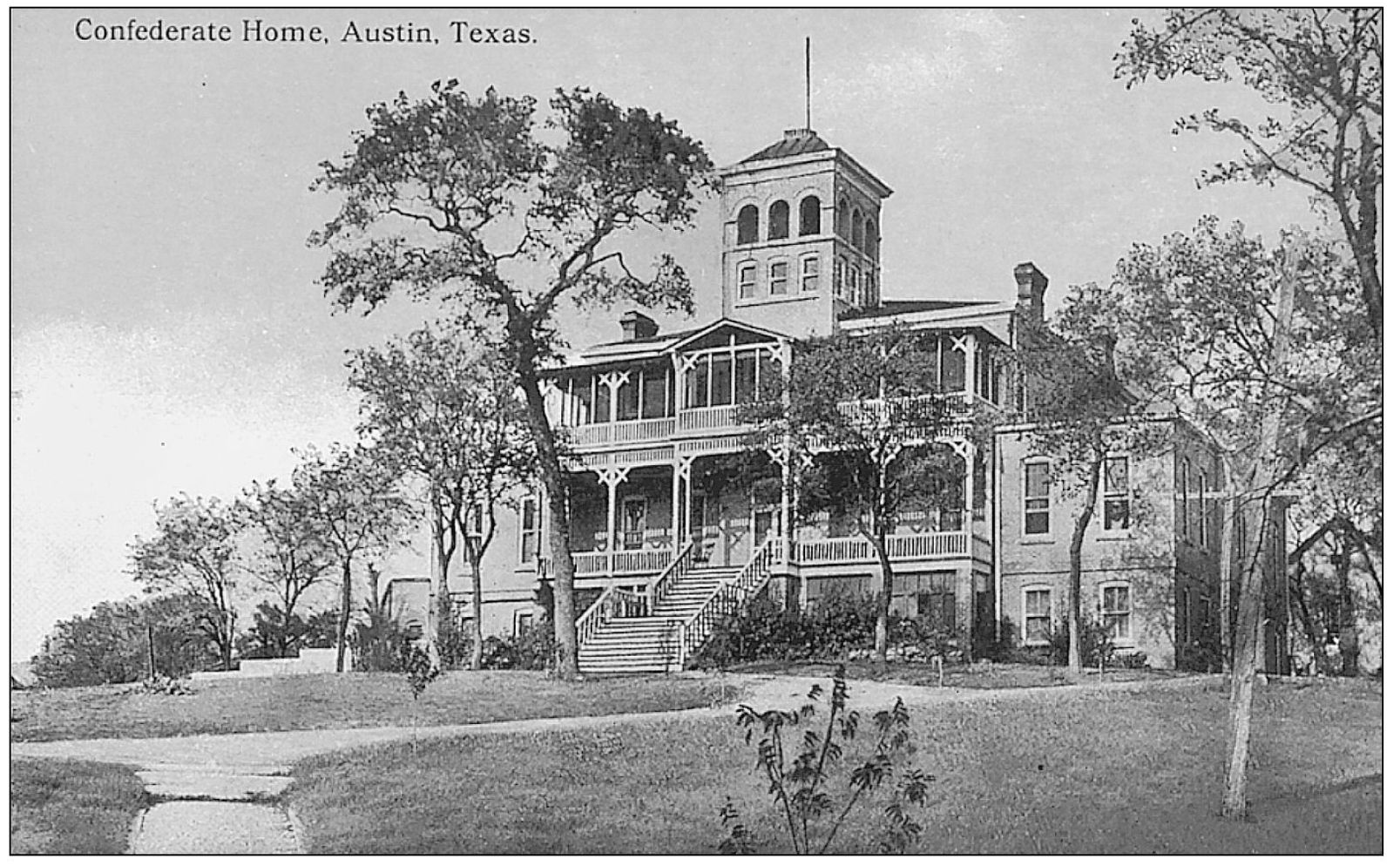
The Confederate Home in west Austin, on 6th Street past Deep Eddy, was established in 1886 as a project of the John B. Hood group of CSA veterans. The official dedication was not until March 13, 1887. In 1893, the operation was turned over to the state, and in 1891, 57 men were living at the home. The same year, it was noted that Kickapoo Indians were living in wigwams down below the depot. (Courtesy Mary Hodge.)
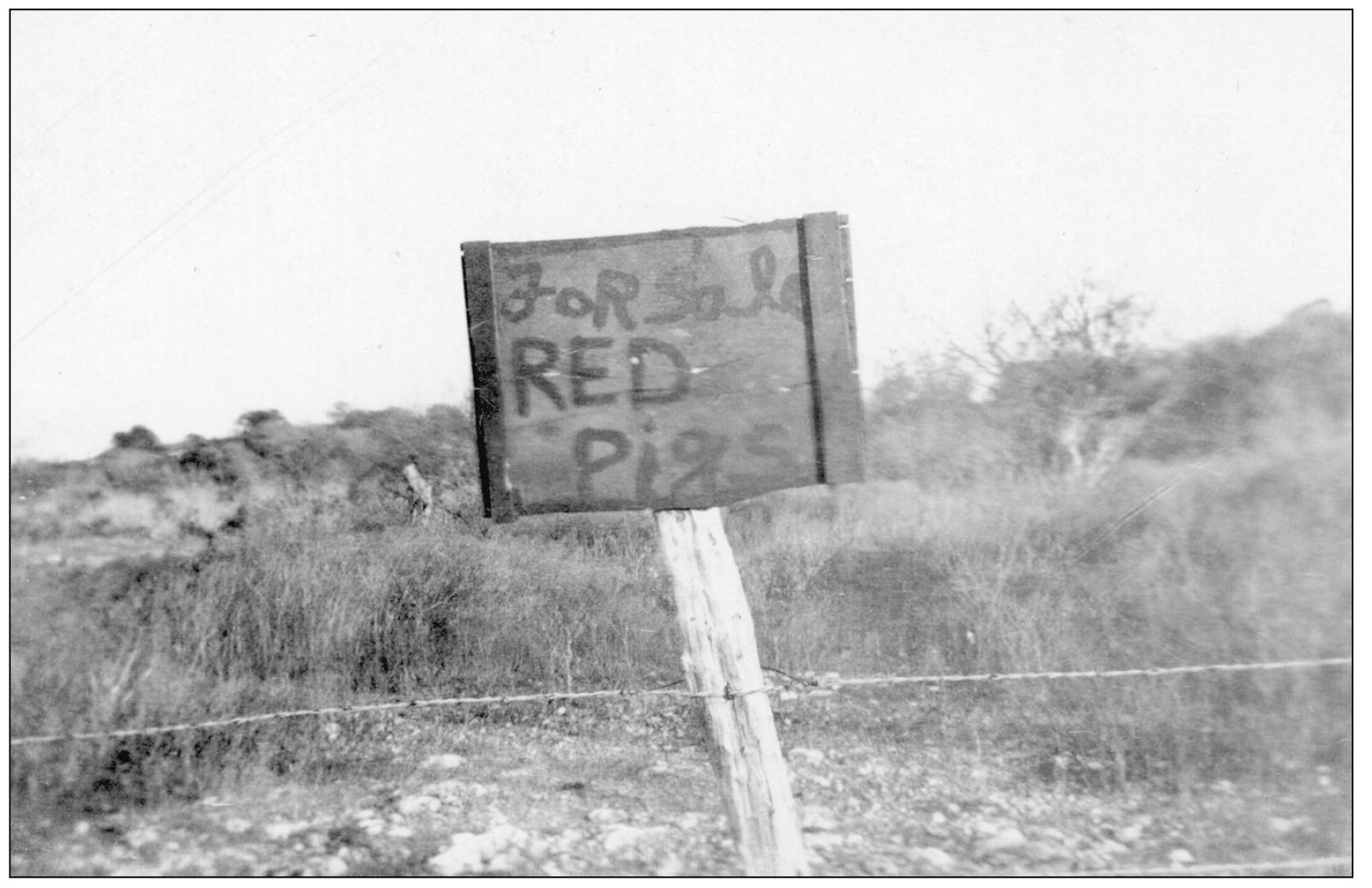
This sign was posted just outside the city limits in 1932. (Courtesy Ken Wukasch.)
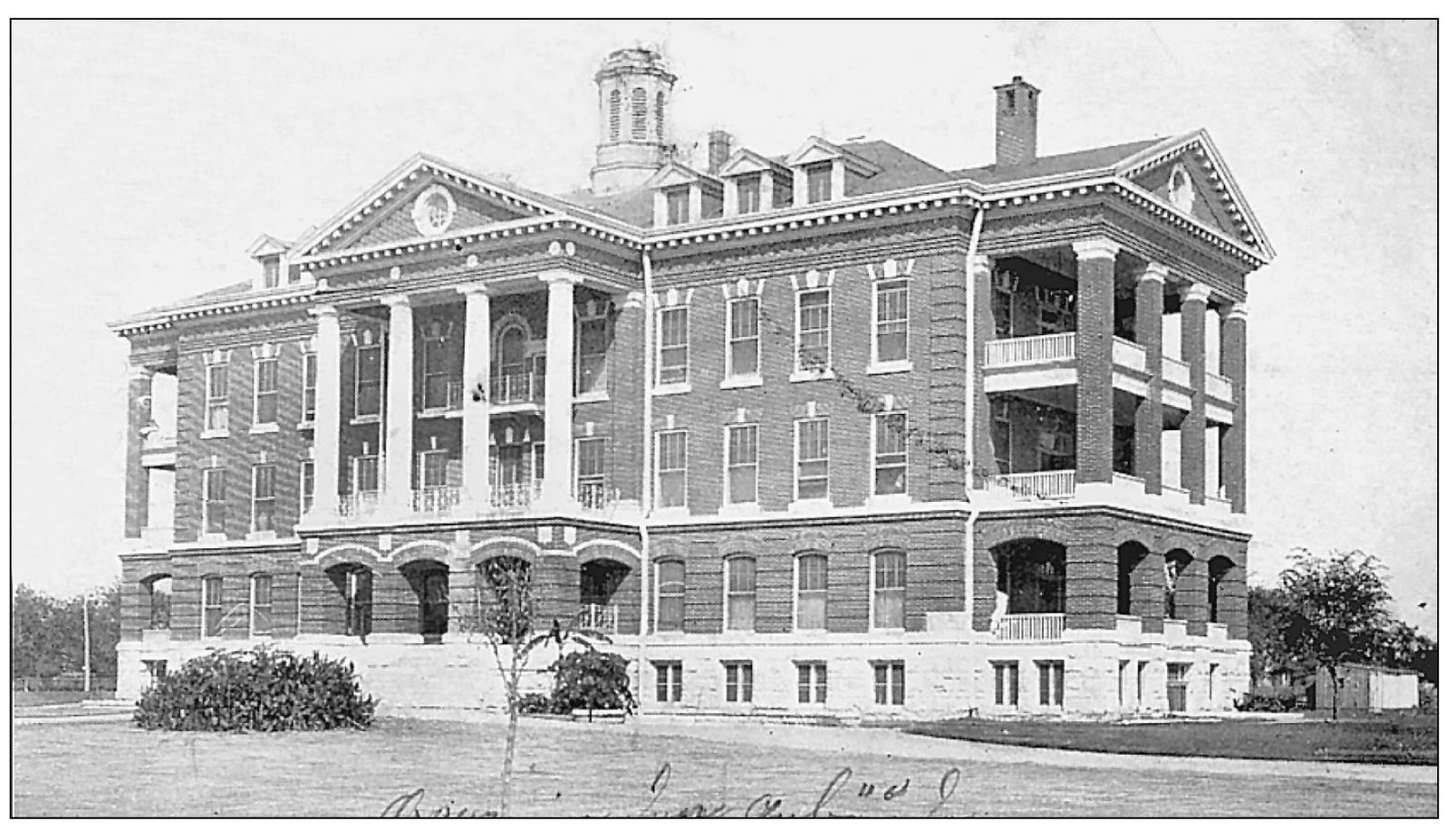
Seton Hospital was built after the turn of the 20th century by the Catholic Daughters. The building was torn down in the early 1970s. (Courtesy Mary Hodge.)
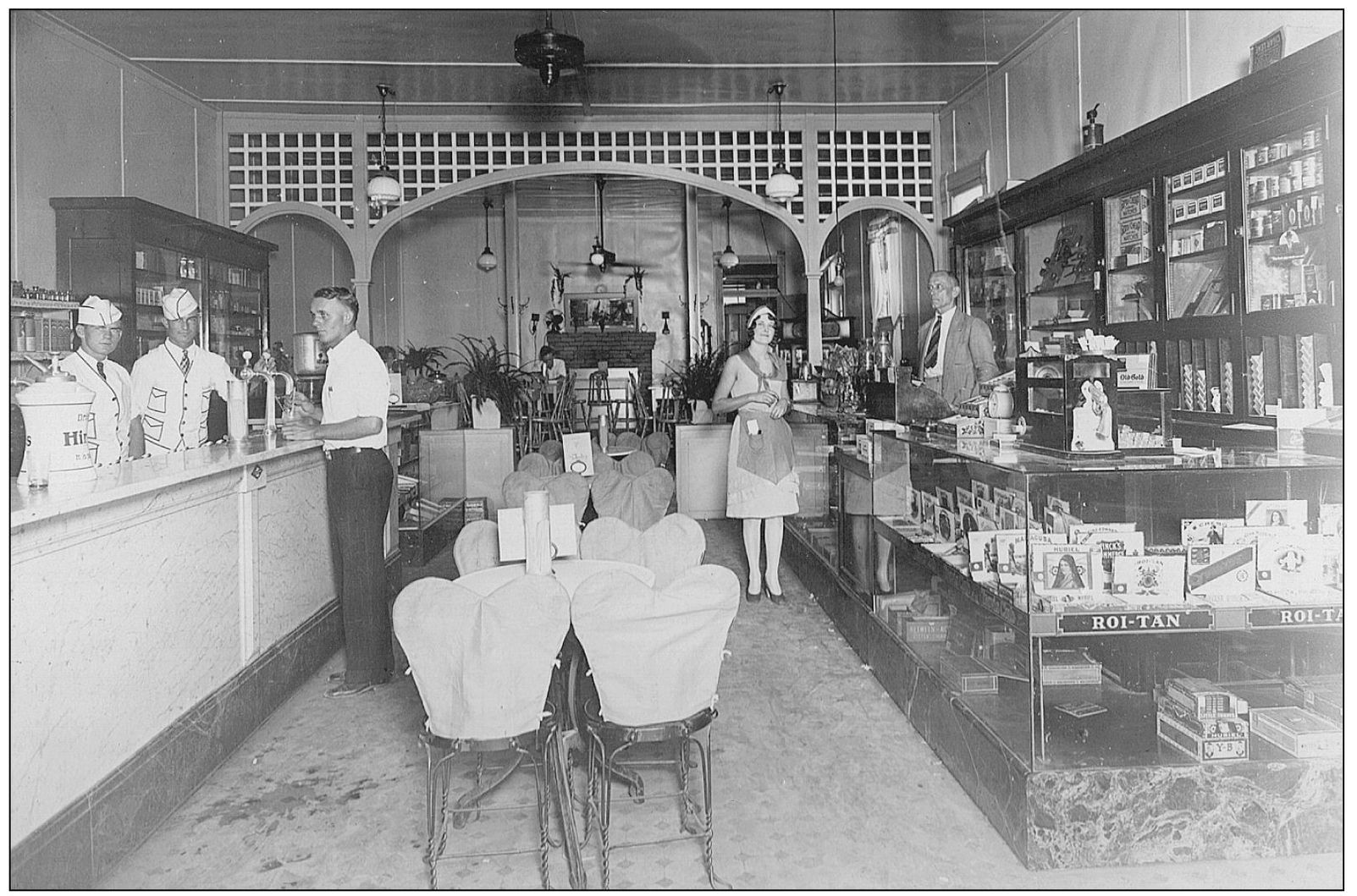
This is how Charlie’s Confectionary Shop, at 2270 Guadalupe Street, looked c. 1925. Pictured, from left to right, are Carl White, Ed Boetcher, unknown customer, unknown waitress, and Mr. Charles G. Wukasch. (Courtesy Ken Wukasch.)
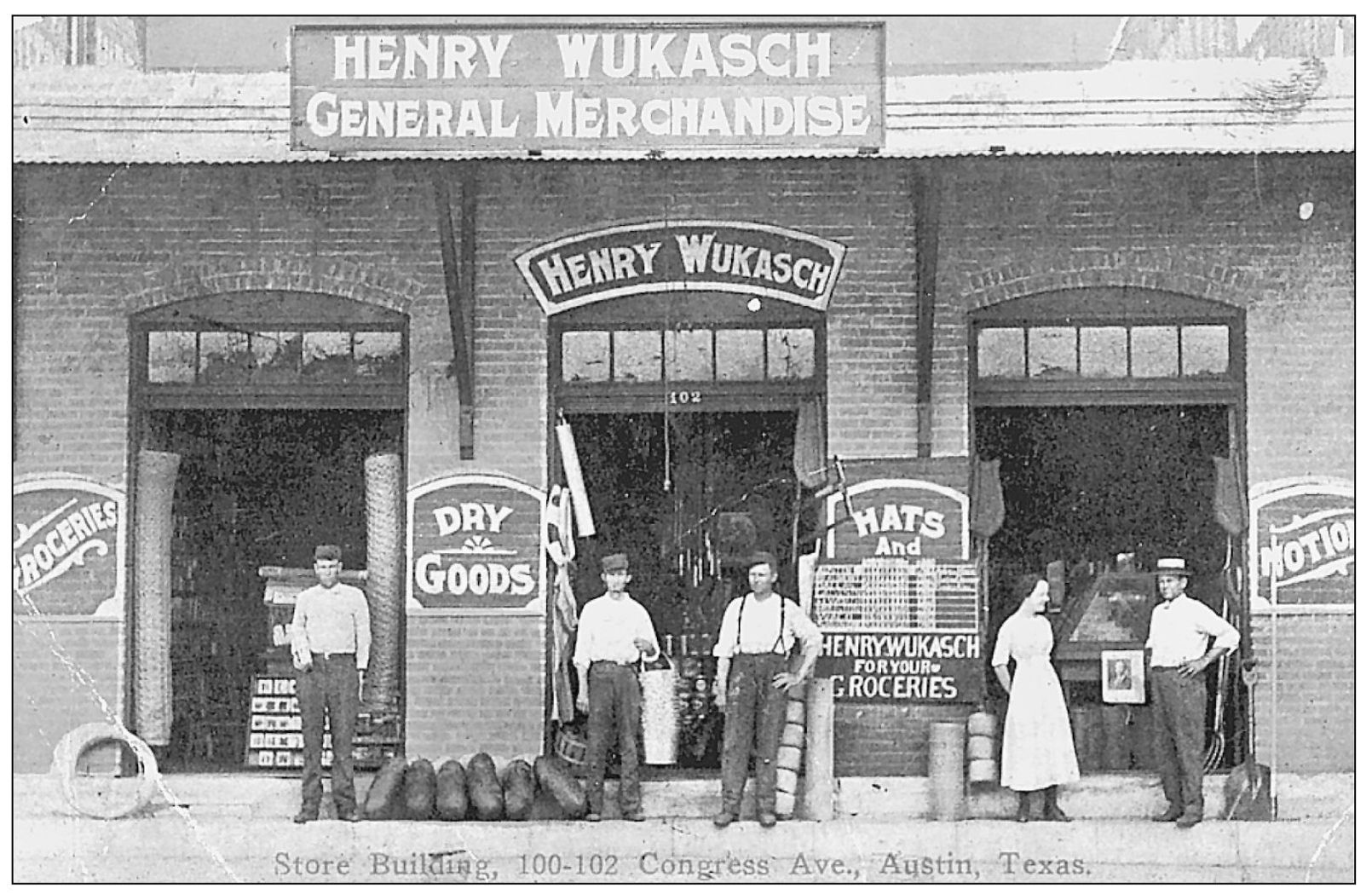
The Henry Wukasch General Merchandise Store, at l00–l02 Congress, opened in 1904, remaining a major business in downtown Austin. It is shown here in 1937. (Courtesy Ken Wukasch.)
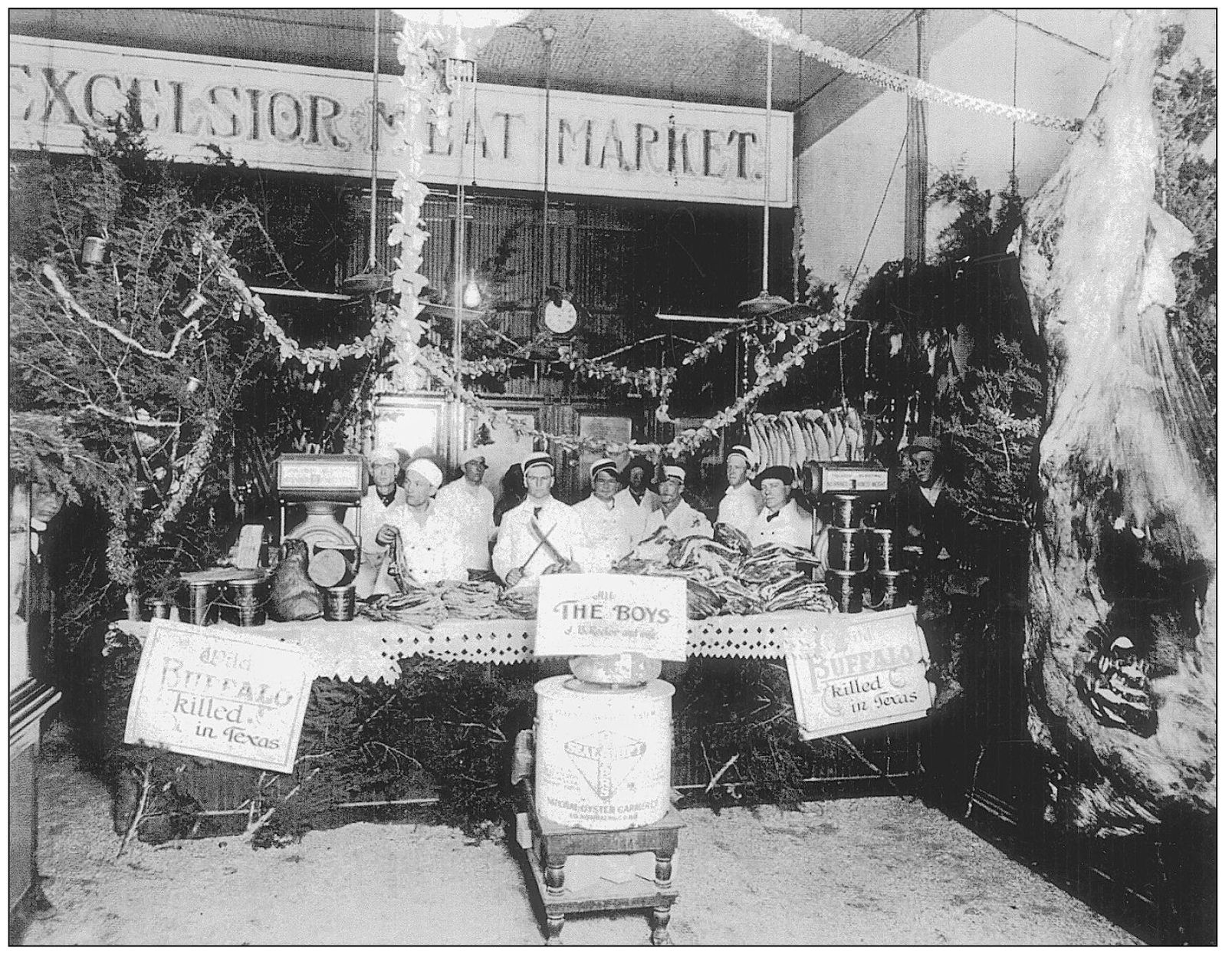
Charles Musgrove Robinson’s meat market, Excelsior, was located at 308 West 5th Street. As shown in this 1900 photograph, they sold buffalo meat killed in Texas. (Courtesy Tom Flinn.)
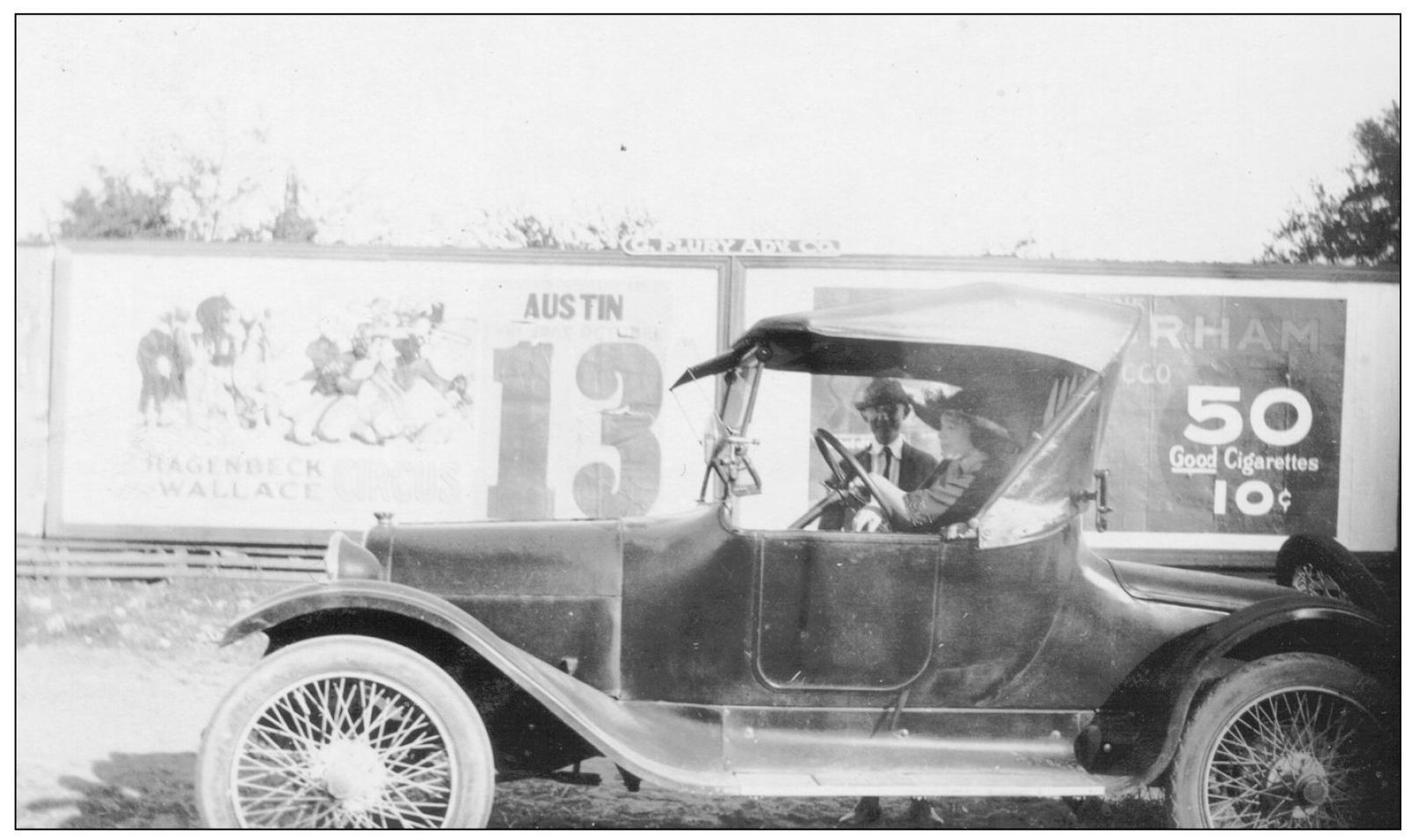
The availability of automobiles in the early 1900s led to the increased use of business deliveries. (Courtesy Ken Wukasch.)
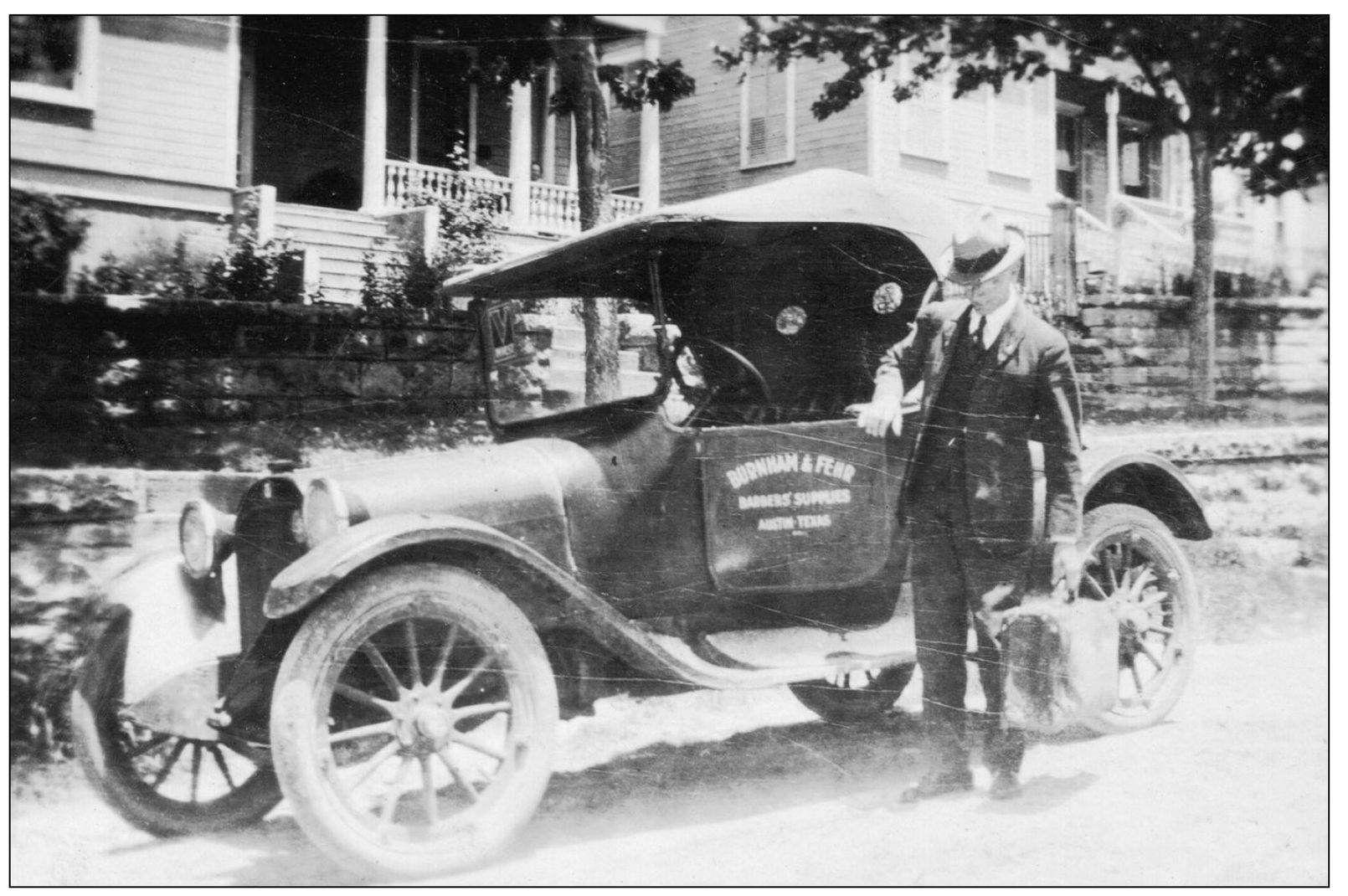
Barber supplies were delivered by this industrious businessman in 1933. (Courtesy Ken Wukasch.)
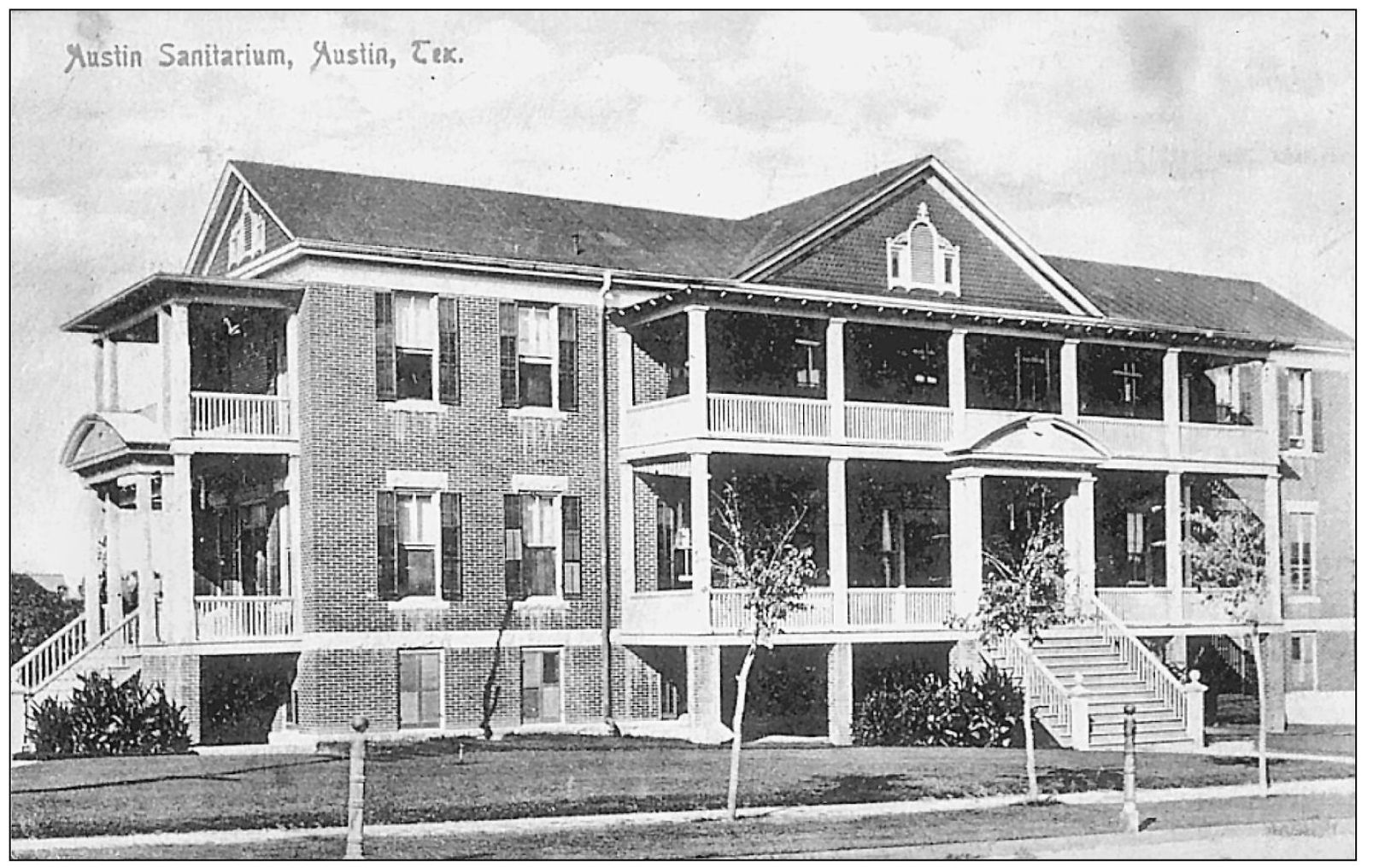
The sixth legislature of Texas, which went into session in 1856, appropriated the first funds and 400,000 acres for asylums in the state. A large portion, $50,000, was set aside to build a “lunatic asylum,” or sanitarium. (Courtesy Mary Hodge.)
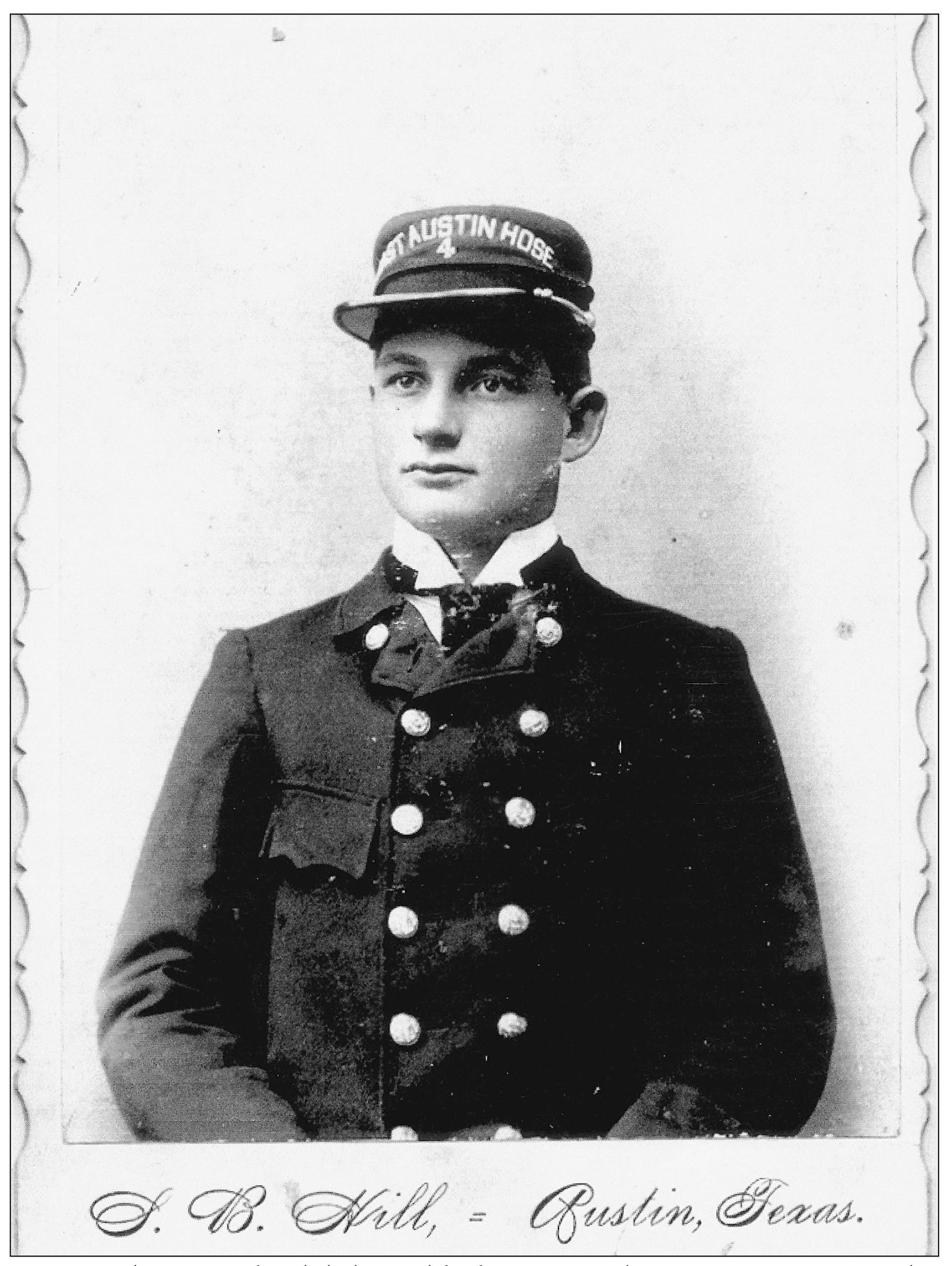
As soon as the city was founded, the need for fire protection became apparent. In November 1839, James Burke’s public library burned to the ground, due to lack of a fire company. Innkeeper Richard Bullock started the first volunteer fire company in 1841. In 1858, John Bremond Sr. and William C. Walsh helped charter the Austin Hook and Ladder Company 1, and John T. Brown, a local blacksmith, built Austin’s first fire truck. William McKenzie Bowden is shown in his fire company uniform in 1895. (Courtesy Tom Flinn.)
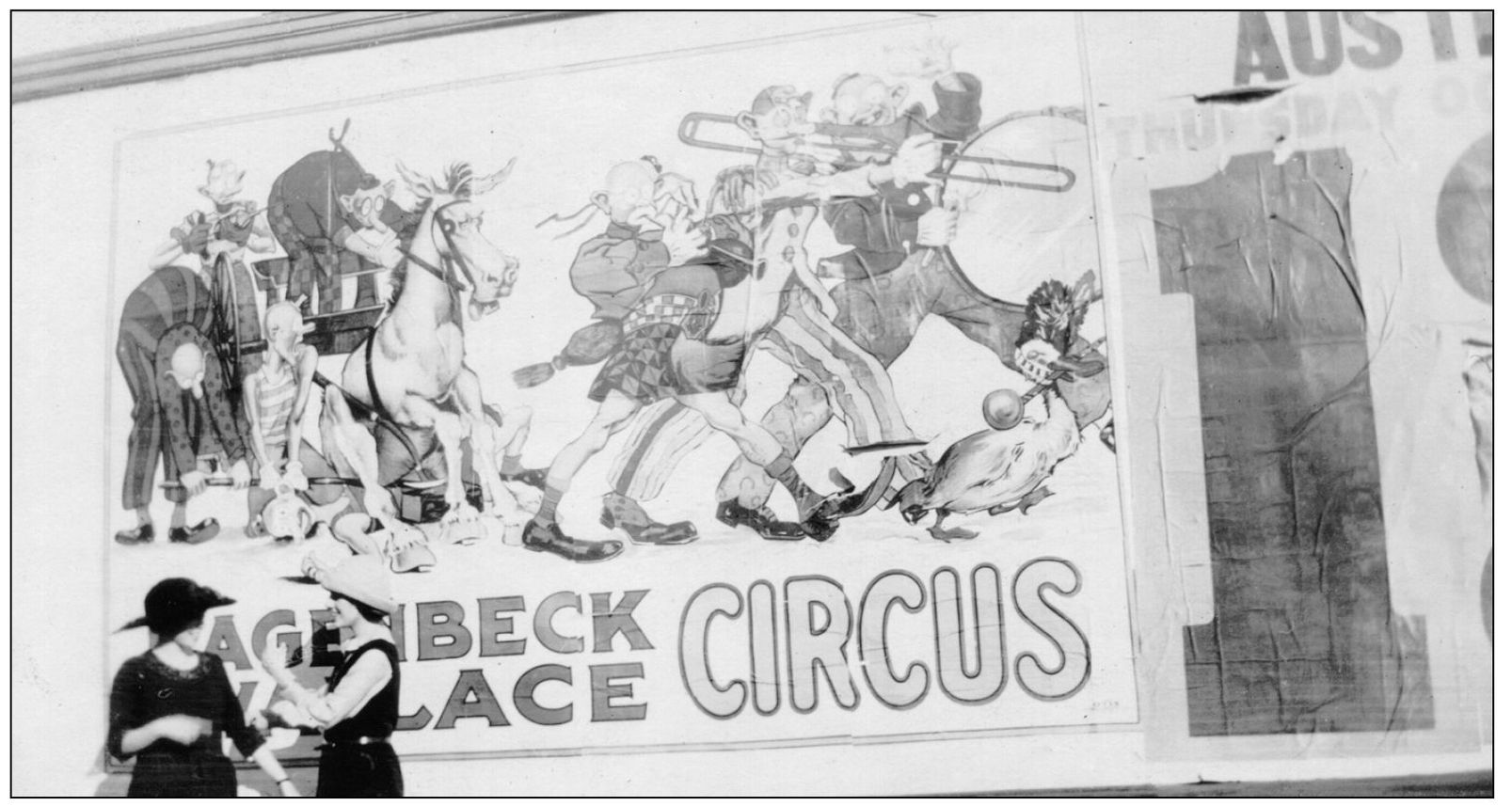
Nothing brought more excitement to town than the arrival of the circus. Usually a large circus arrived by train and marched the animals up Congress Avenue. (Courtesy Ken Wukasch.)
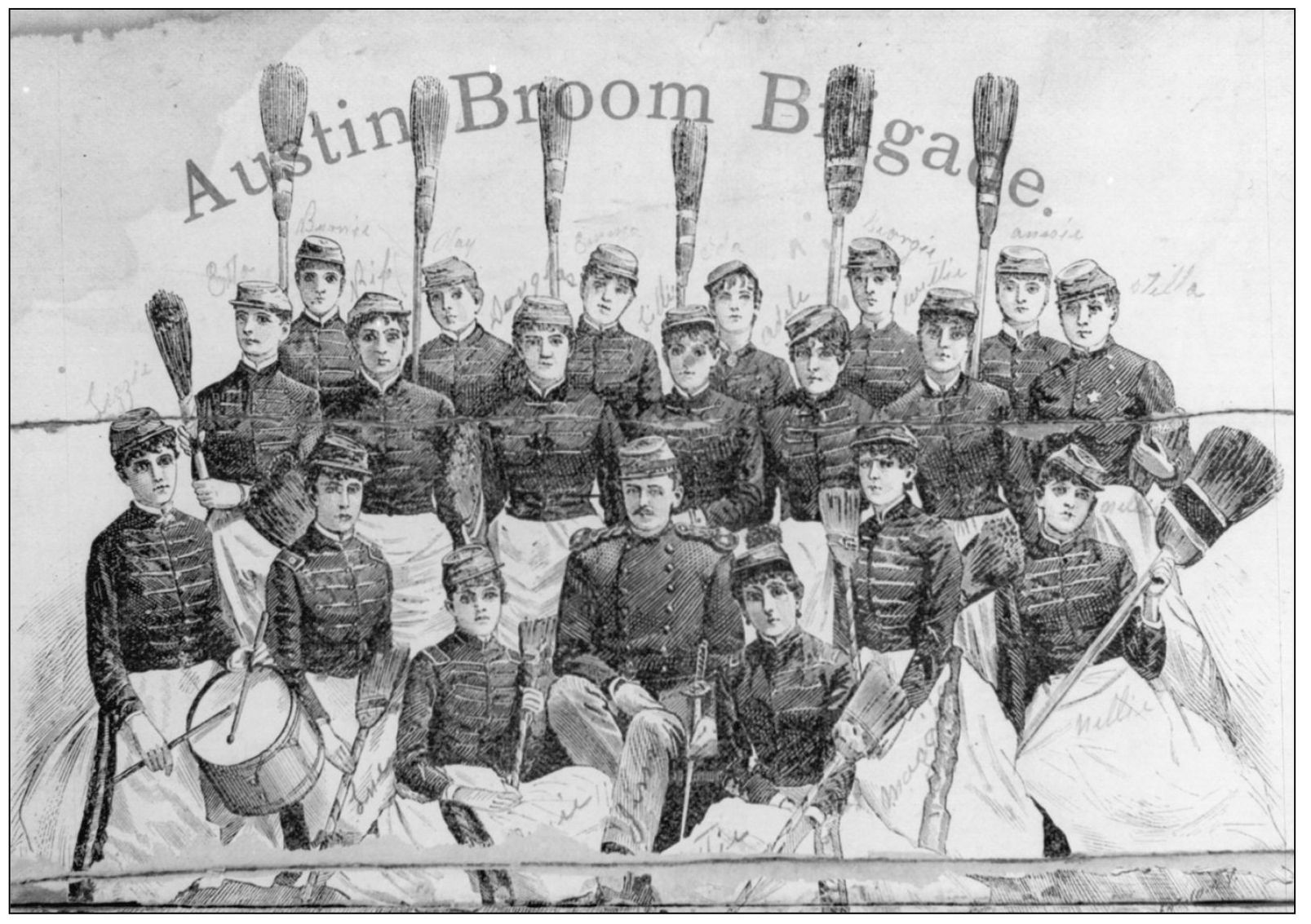
The entire history of the “Austin Broom Brigade” is unknown. It was more than likely a play or theatrical group, not smartly clad damsels, in military-like uniforms and carrying brooms, who actually cleaned streets or houses after a fire. (Courtesy Lel Hawkins.)
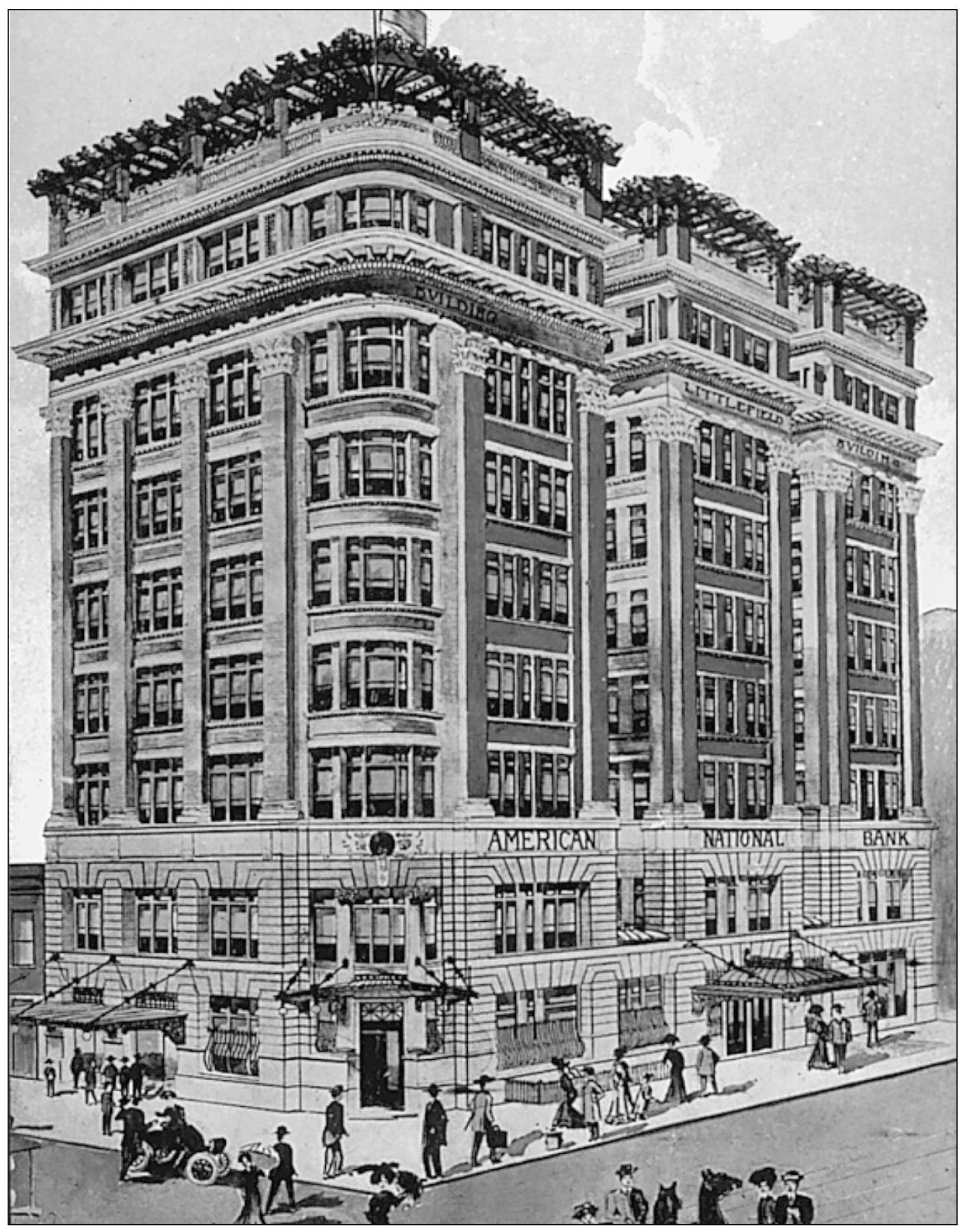
The Littlefield Building is considered by many to be the most beautiful building in Austin. It was built in 1910–1911 by Major George W. Littlefield (1842–1920), a cattleman and banker who served the Confederacy with Terry’s Texas Rangers. The nine-story building on the corner of 6th and Congress has huge bronze doors depicting scenes from his ranches, and were cast by Tiffany Company of New York. In 1901 Littlefield purchased 312,000 acres of the XIT ranch for $2 an acre. He served as a University of Texas regent for many years, donated over $100,000 to purchase books for UT, left his home to UT, and for the first 50 years of the school’s existence, was its largest benefactor. (Courtesy Mary Hodge.)
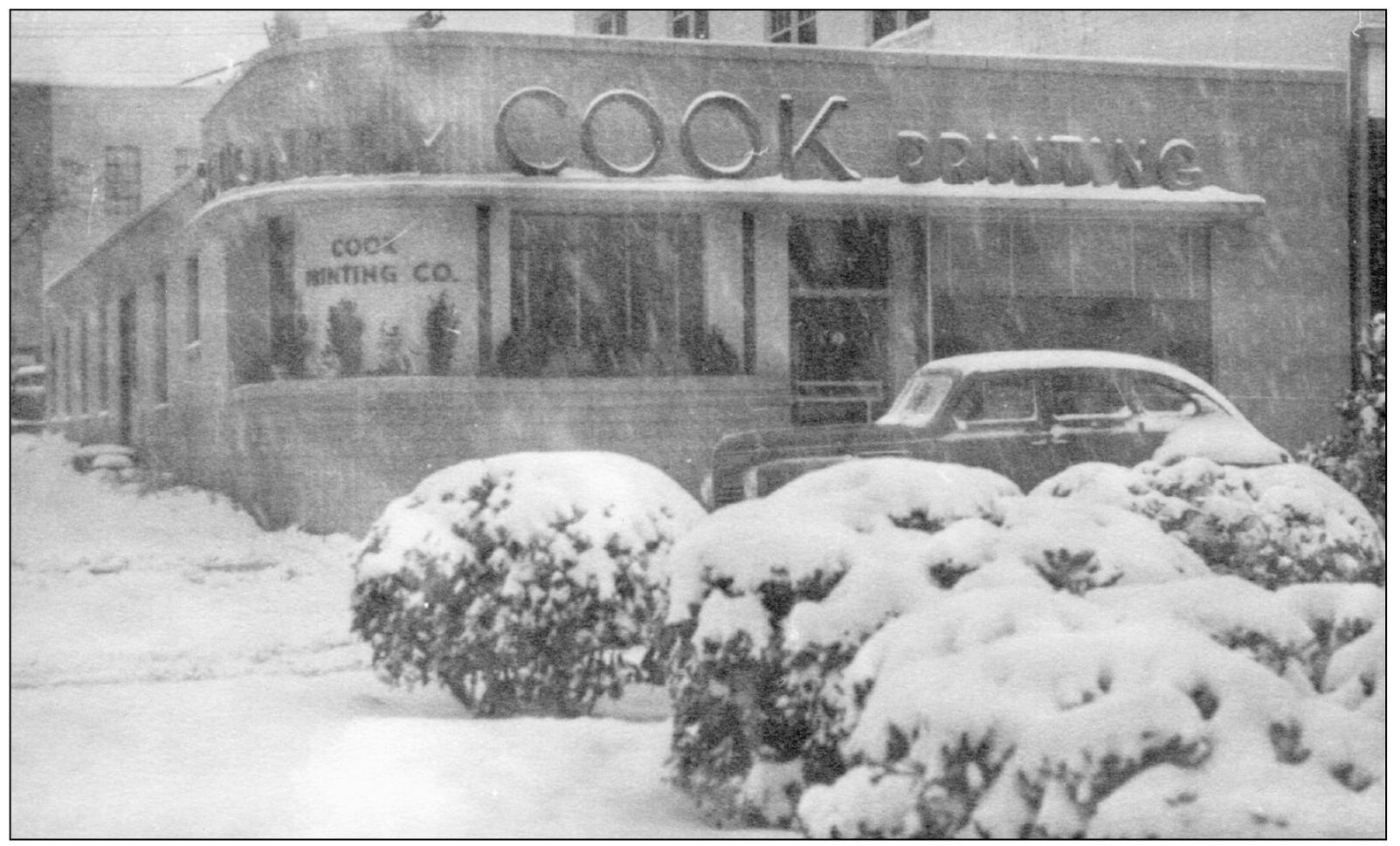
The Cook Printing Company operated for many years in Austin. It was a family operation, run mostly by brothers Frank and Sam and sister Mildred. Another sister, Katherine Cook, was a long- time educator for whom Cook Elementary School is named.
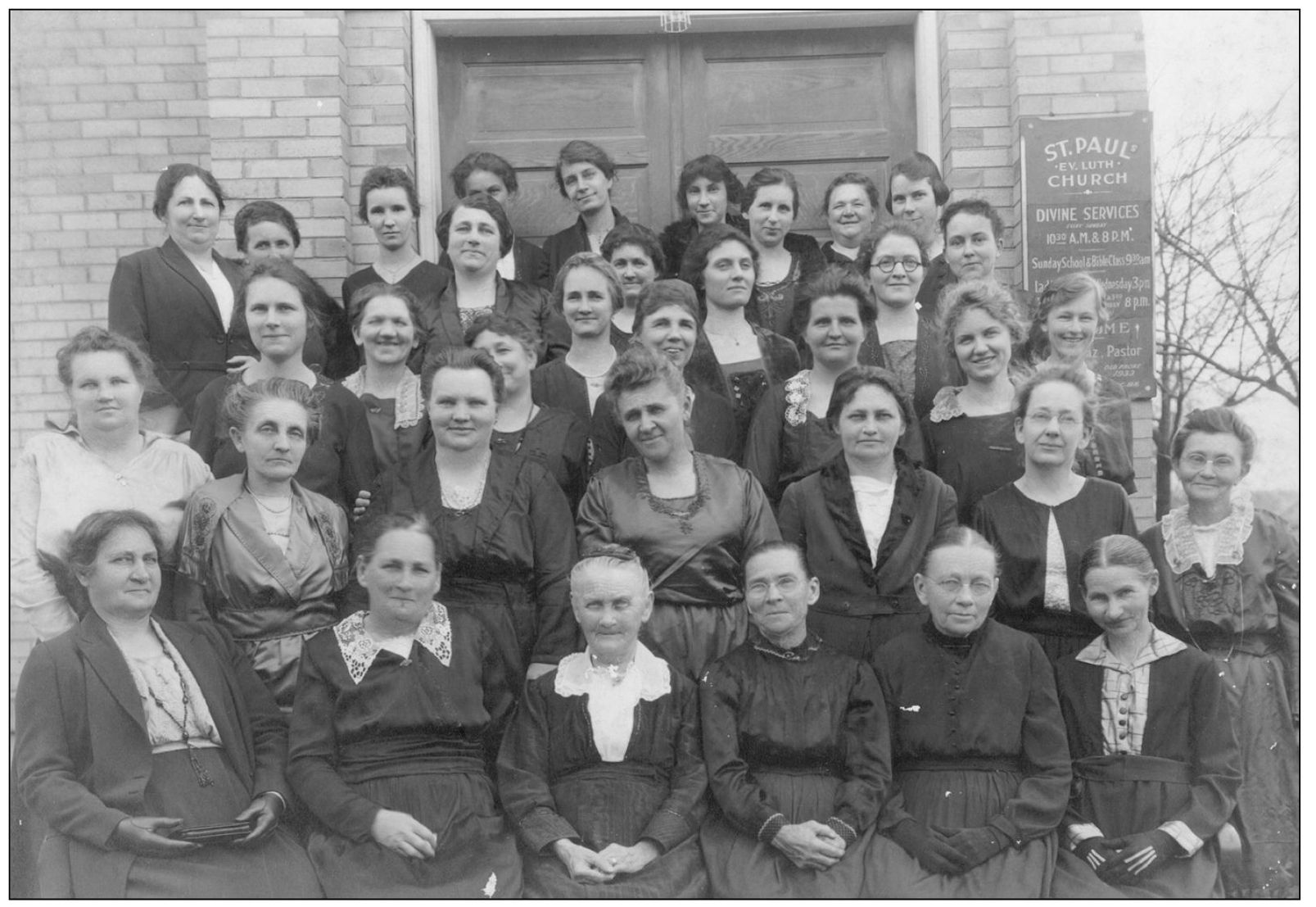
This was the Ladies Aid Society of St. Paul Lutheran Church. (Courtesy Ken Wukasch.)
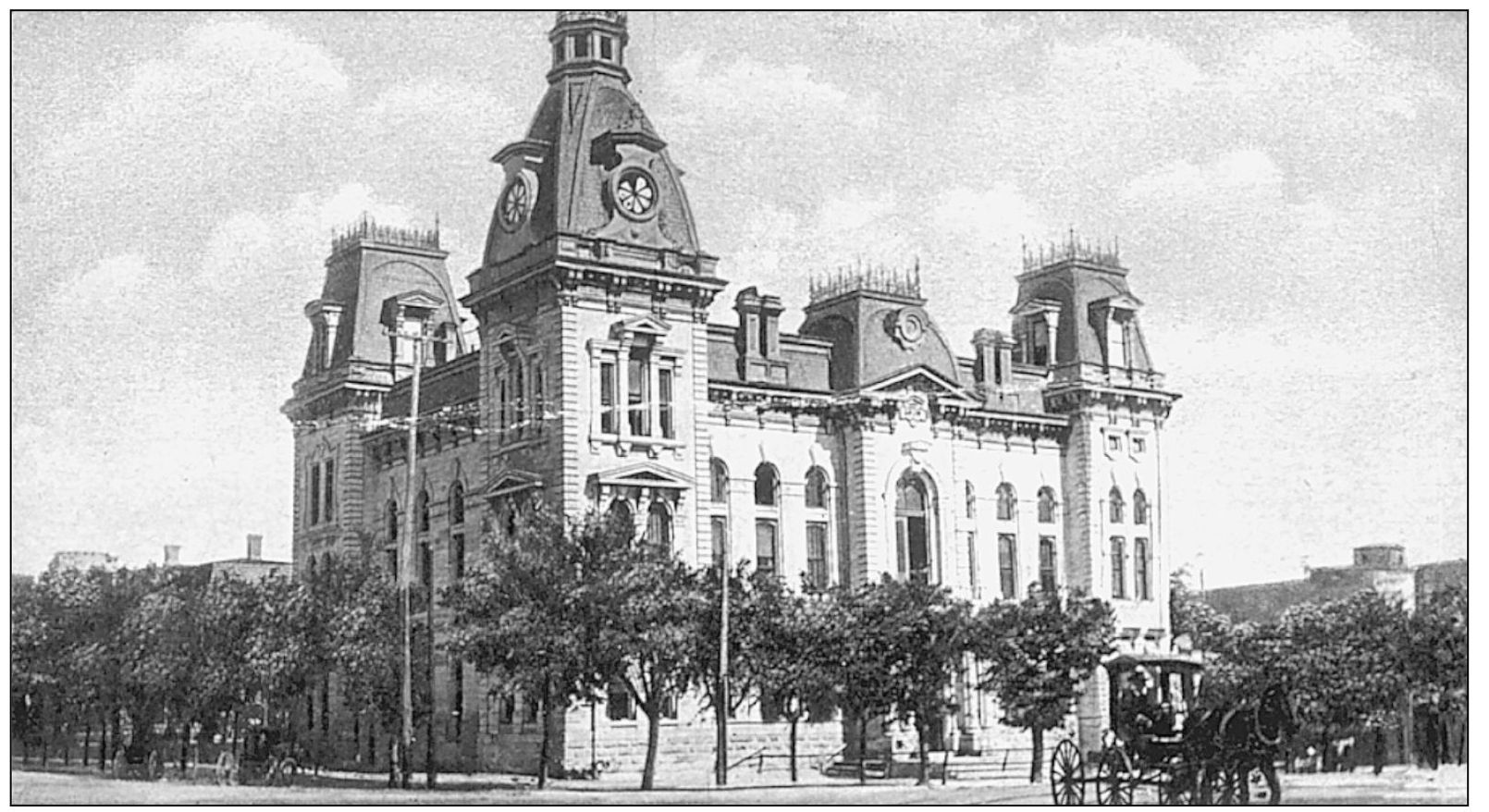
This was the third Travis County courthouse, built in 1876 at Eleventh and Congress. It was used until 1931 when the most current courthouse was built. (Courtesy Mary Hodge.)
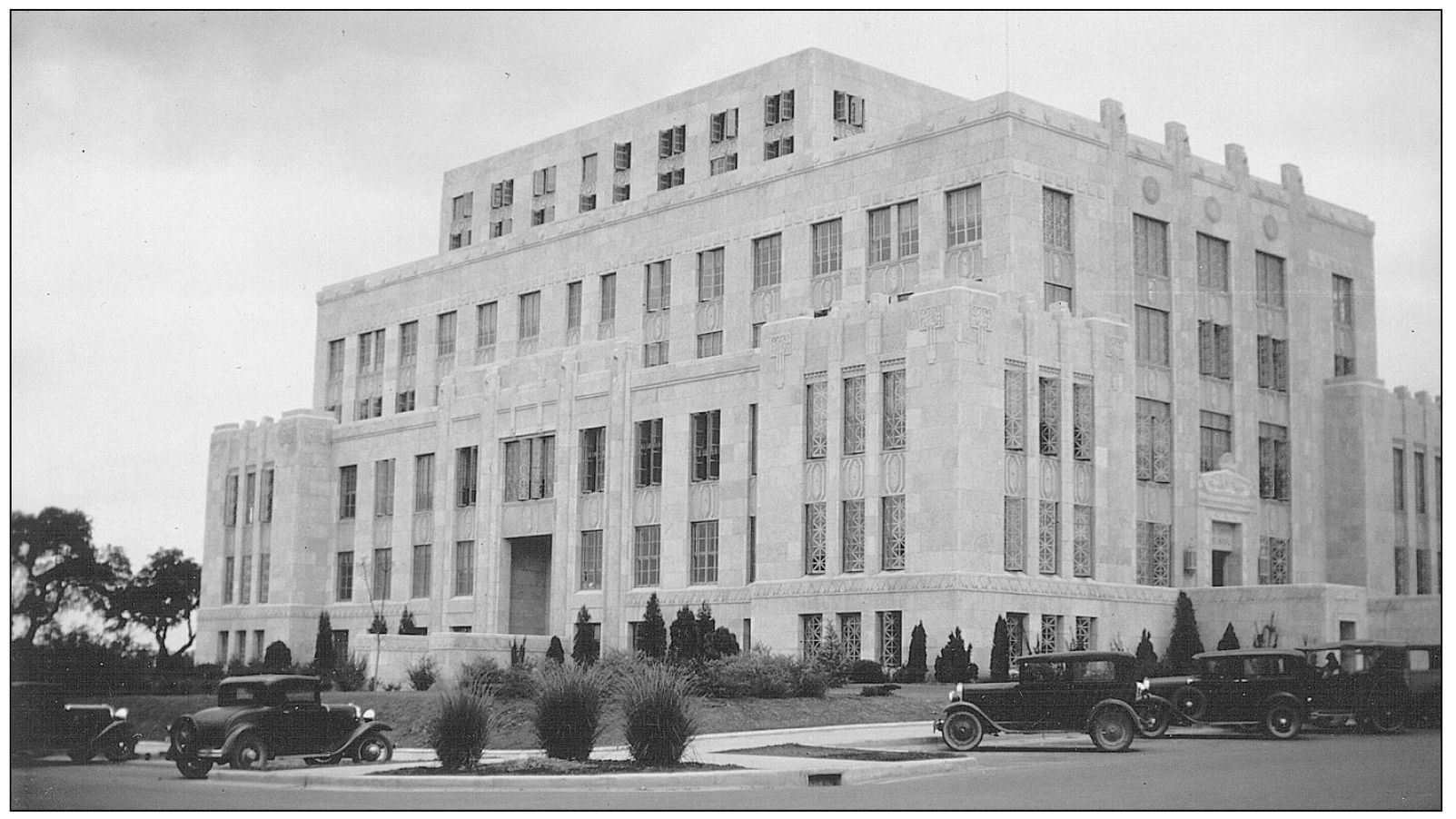
This is the fourth and last Travis County courthouse located at Tenth and Guadalupe Streets, built during 1931–1933. (Courtesy Ken Wukasch.)
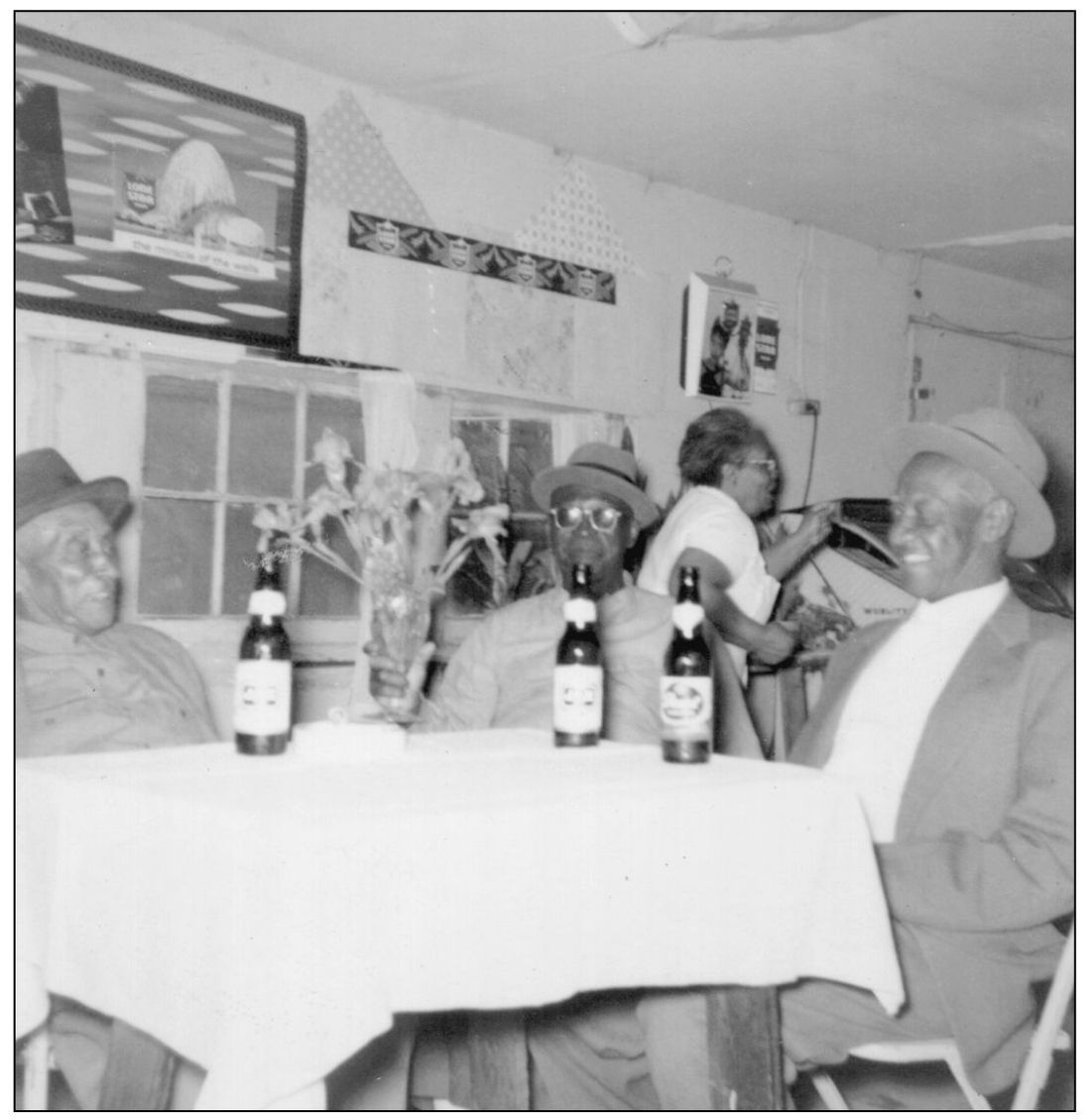
The “Gay Paree” cafe and tavern was located at 1711 East 12th Street. Owned and operated by Fannie Ussery Brown, it was the second-oldest beer tavern west of Chicon when it opened in 1946. Pictured, from left to right, are as follows: Jim Driver, a.k.a. “One Arm Driver;” Nathan “Buck” Yett (whose claim to fame was finding the body of murder victim “Madam” Tiny Barton in the 1950s); and World War I veteran Marcus Thompson. The only beer brands available after WW II were Southern Select, Grand Prize, and Falstaff. (Courtesy Ursula Carter.)

Austin had several post office buildings and William Rust, postmaster in 1857–1859, reported that he had four hundred private boxes for mail, renting at 50¢ quarterly. This new post office was built on the former site of the Carrollton Hotel about 1919. In 1901, free rural delivery had started in Travis County, and airmail began for Austin on February 6, 1928. (Courtesy Mary Hodge.)